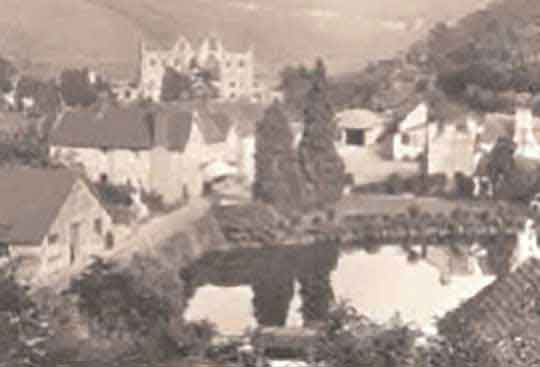mill story
The only surviving water wheel of 22 on the Angidy River
the best wireworks in the country
A historic working water wheel that powered 19th century local industries



abbey mill history
Rolling pins, candlesticks, skittles and wooden coconut shy balls were just some of the products made at Abbey Mill during the 20th century, when the upper floor was a thriving wood turnery. Skilled craftsmen worked oak, alder and sycamore into chair legs and spindles, until WW 2 forced the turnery to close. Downstairs a saw mill processed local timber until the 1970s.
There was no emergency stop on the waterwheel which powered the saws, so men working here were in constant danger of cutting off hands or fingers! Inside you can still see the remains of the wheels and belts, which drove the saws. Power came from this waterwheel to provide energy for the Valley’s industries. In the 1800s there were 22 waterwheels lining the banks of the Angidy river. The Abbey Mill wheel is the only one to survive.
Detail from a painting by Donald Floyd, courtesy of Newport Museum & Art Gallery.
the wheel
The Old Water Wheel and Workings were taken away to be restored with TLC back in November 2008.The Old Water Wheel was made in the 1870’s and turned until Thursday 22nd March 1951. After the Easter Holidays the men returned to work to find that the machines were now powered by Electricity. April 2009 saw the wheel come back home and turn again at Abbey Mill. The restoration was a part of an ‘Overlooking the Wye’ project, part funded by the Heritage Lottery.
The Angidy Valley
Why were the wireworks built here?
Making Britain less dependent on imported goods was government policy during Elizabeth 1’s reign. Riverside locations, where there was sufficient water power for a mill, were much sought after. The fast flowing Angidy was ideal. It could drive the waterwheels which powered furnaces, forges and wireworks.
The Angidy had the advantage of local iron mines and furnaces, nearby woodland producing charcoal and easy river access. Tintern was originally chosen as a brass making site and was soon producing some of the best wire in the country. It was the first wireworks in Britain to use waterpower to assist the ‘wire drawing’ process. By the early 19th century there were 22 waterwheels along a two mile stretch of the Angidy.

Lovely old watermill
Lovely old watermill. Lots to see.. and eat! Great coffee, and my nephew loved his apple strudel! Nice service from friendly and attentive staff. And as a bonus, dog friendly too. Google



